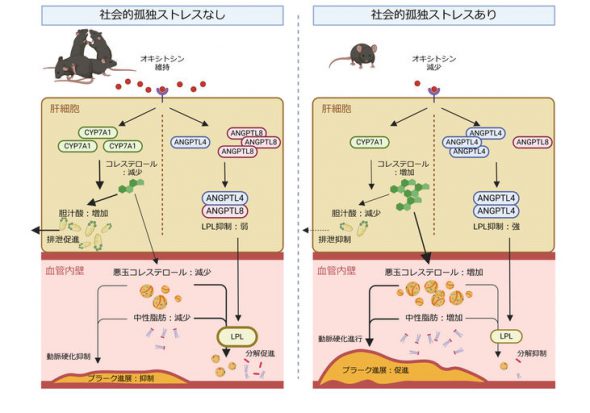-
About
- Kyoto Prize
-
Research Grants
-
News
This website uses cookies to improve the user experience. If you continue on this website, you will provide your consent to our use of cookies.
About
Research Grants
News
Assistant Professor, School of Medicine, Keio University *Profile is at the time of the award.
2022Inamori Research GrantsBiology & Life sciences
Thank you very much for your kind acceptance of my proposal. My research focuses on immune cells and humoral factors that connect organs. I look forward to working with you.
BACKGROUNDS: Social interaction with others is essential to life. Although social isolation and loneliness have been implicated as increased risks of cardiometabolic and cardiovascular diseases and all-cause mortality, the cellular and molecular mechanisms by which social connection maintains cardiometabolic and cardiovascular health remain largely unresolved.
METHODS: To investigate how social connection protects against cardiometabolic and cardiovascular diseases, atherosclerosisprone,high-fat diet-fed Apoe−/− mouse siblings were randomly assigned to either individual or grouped housing for 12 weeks. Histological, flow cytometric, biochemical, gene, and protein analyses were performed to assess atherosclerotic lesions, systemic metabolism, inflammation, and stress response. The effects of oxytocin on hepatocytes and subsequent cardiometabolic and cardiovascular function were investigated by in vivo and in vitro approaches.
RESULTS: Apoe−/− mice housed individually developed larger vulnerable atherosclerotic lesions by disrupted lipid metabolism compared with those of mice in regular group housing, irrespective of body weight, eating behavior, feeding conditions, sympathetic nervous activity, glucocorticoid response, or systemic inflammation. Mechanistically, the chronic isolation reduced the hypothalamic production of oxytocin, which controls bile acid production and LPL (lipoprotein lipase) activity through the peripheral OXTR (oxytocin receptor) in hepatocytes, whose downstream targets include Cyp7a1, Angptl4, and Angptl8. While hepatocyte-specific OXTR-null mice and mice receiving adeno-associated virus targeting OXTR on hepatocytes led to severe dyslipidemia and aggravated atherosclerosis, oral oxytocin supplementation to socially isolated mice, but not to hepatocyte-specific OXTR conditional knockout mice, improved lipid profiles and retarded atherosclerosis development.
CONCLUSIONS: These results identify a novel brain-liver axis that links sociality to hepatic lipid metabolism, thus proposing a potential therapeutic strategy for loneliness-associated atherosclerosis progression.BACKGROUNDS: Social interaction with others is essential to life. Although social isolation and loneliness have been implicated as increased risks of cardiometabolic and cardiovascular diseases and all-cause mortality, the cellular and molecular mechanisms by which social connection maintains cardiometabolic and cardiovascular health remain largely unresolved.

Ko S, et al. (2025) Social Bonds Retain Oxytocin-Mediated Brain-Liver Axis to Retard Atherosclerosis. Circ Res 136(1):78-90. doi: 10.1161/CIRCRESAHA.124.324638. Epub 2024 Nov 27. PMID: 39601150
Biology & Life sciences
